This is the first from a series of 5 articles covering my recent visit to the city of Arad. I took many photos and it is simply impossible to put them in a single blogpost. Here I will cover the northern part of the city center, including the main railway station and the road from it towards the town hall. From the beginning I’d like to say that I was deeply shocked by the state of this city, the oldest of Romania bearing the same name since year 1028, with a rich history like no other. For this reason, I will not try to embellish it; on the contrary, I will show it as it is now, left in ruin by the Romanian authorities. I will be critical, as its condition needs to be highlighted; it is probably the most beautiful city of Transylvania – you will see the many big beautiful buildings in utter ruin in the next articles – and it’s a shame it’s not included in some touristic project…

We begin our journey with the façade of the Arad central railway station, built in 1858 when Arad was a major city in the Austro-Hungarian Empire. It is one of the gateways to Europe for most of Romania and is currently plagued by migrants mainly from the Indian subcontinent. Arad is connected internationally to Wien Westbahnhof and Budapest-Keleti.
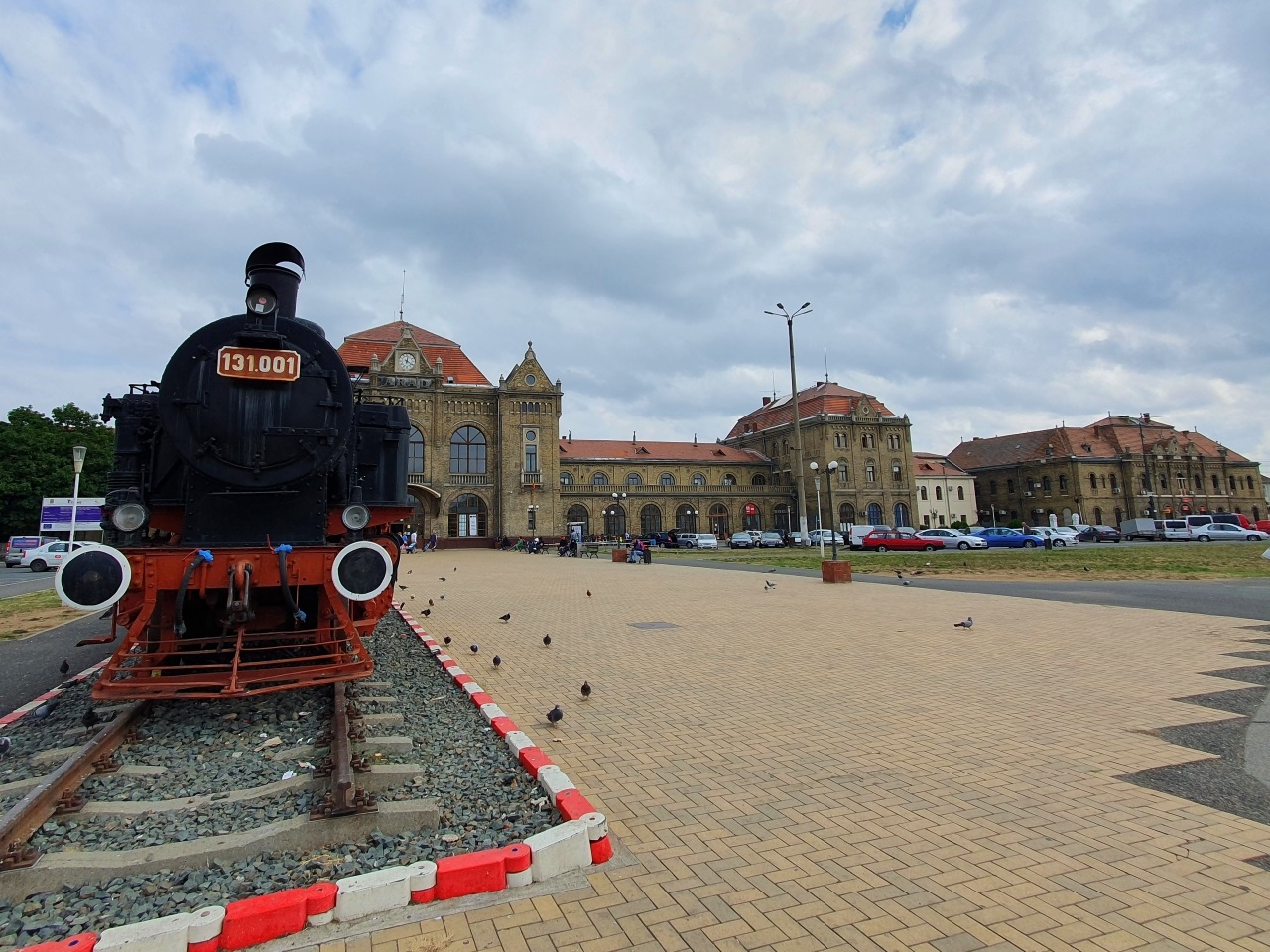
At the entrance there is an old train locomotive put on display, occasion for tourists to take photos. Arad is also plagued by pigeons, a huge population for which I have no explanation. The building to the right is one of the main Postal Offices of the city, the OP2.
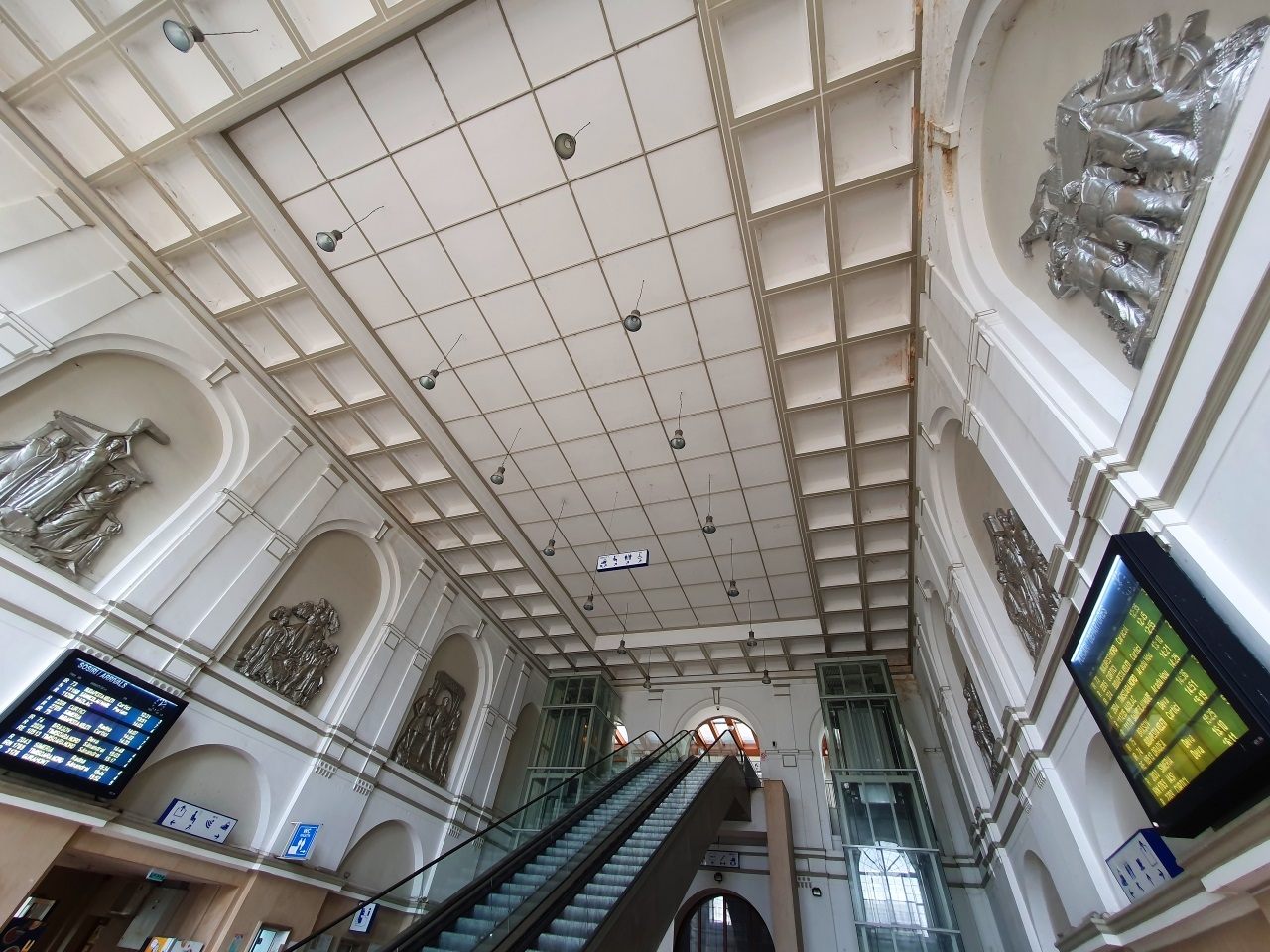
Here is a view from the interior of the railway station. The sculptures are rather communist in style but still beautiful. The access to the trains is from above; it resembles to Mulhouse but it’s much bigger.
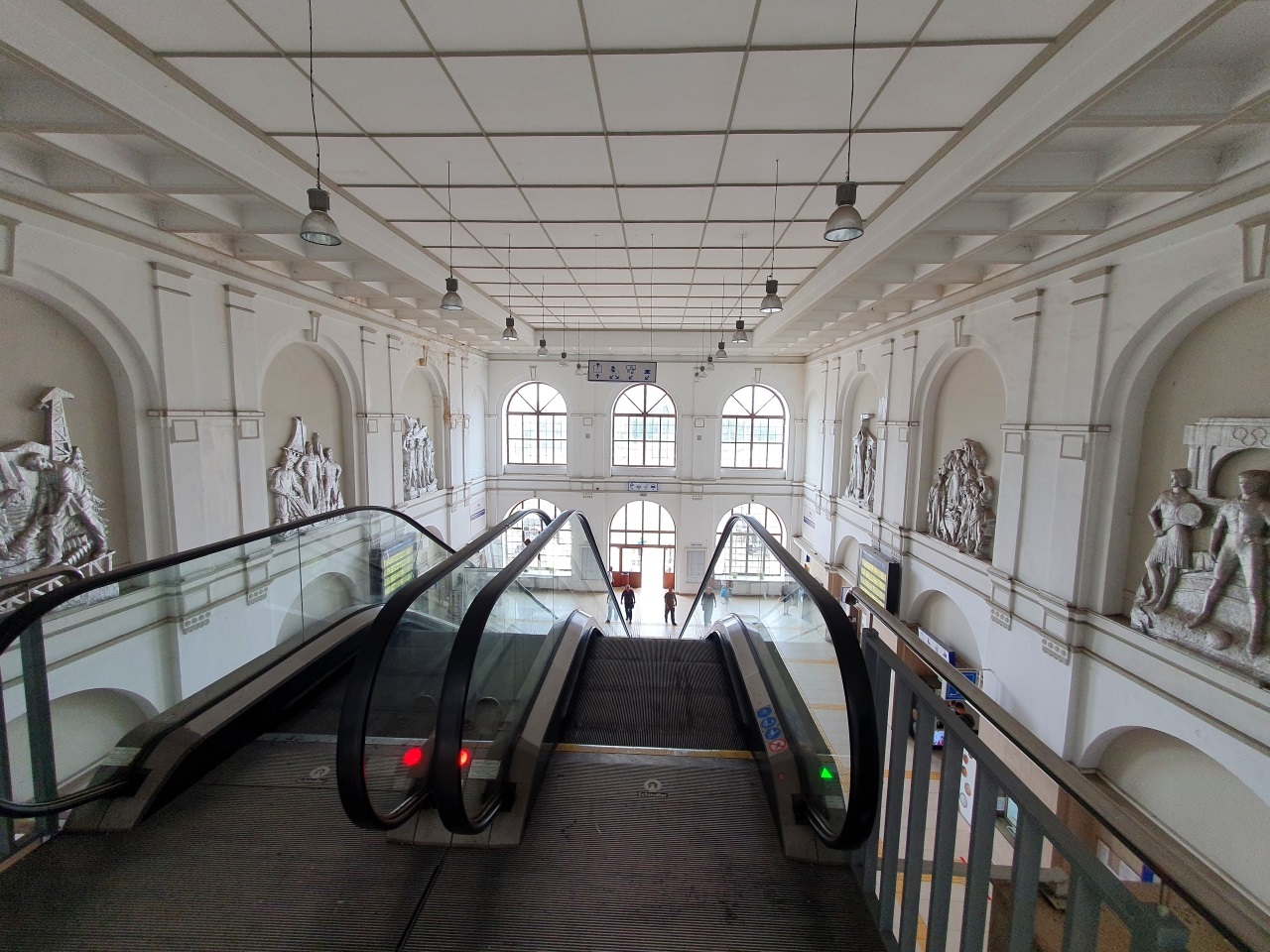
Here is the first view a tourist sees when they leave their train. I really liked it.

Rather close to the railway station is the Atrium Mall. It’s a big mall for Romanian standards but rather empty for the time of the day when I visited it. Full of migrants, probably workers, as the Romanians have left their homeland and there is nobody to work in their place. Soon I discovered groups of migrants queuing to send money home at some money transfer office… it’s kinda sad if you think for a moment, as it’s not a pleasure to leave your country because you can’t survive in it and go to the other side of the world… I also put this photo of a wing of the mall just to show you that Romania is civilized, it’s not at all a jungle; however, you are “at the edge of the empire” (European Union), if you can read me between lines…
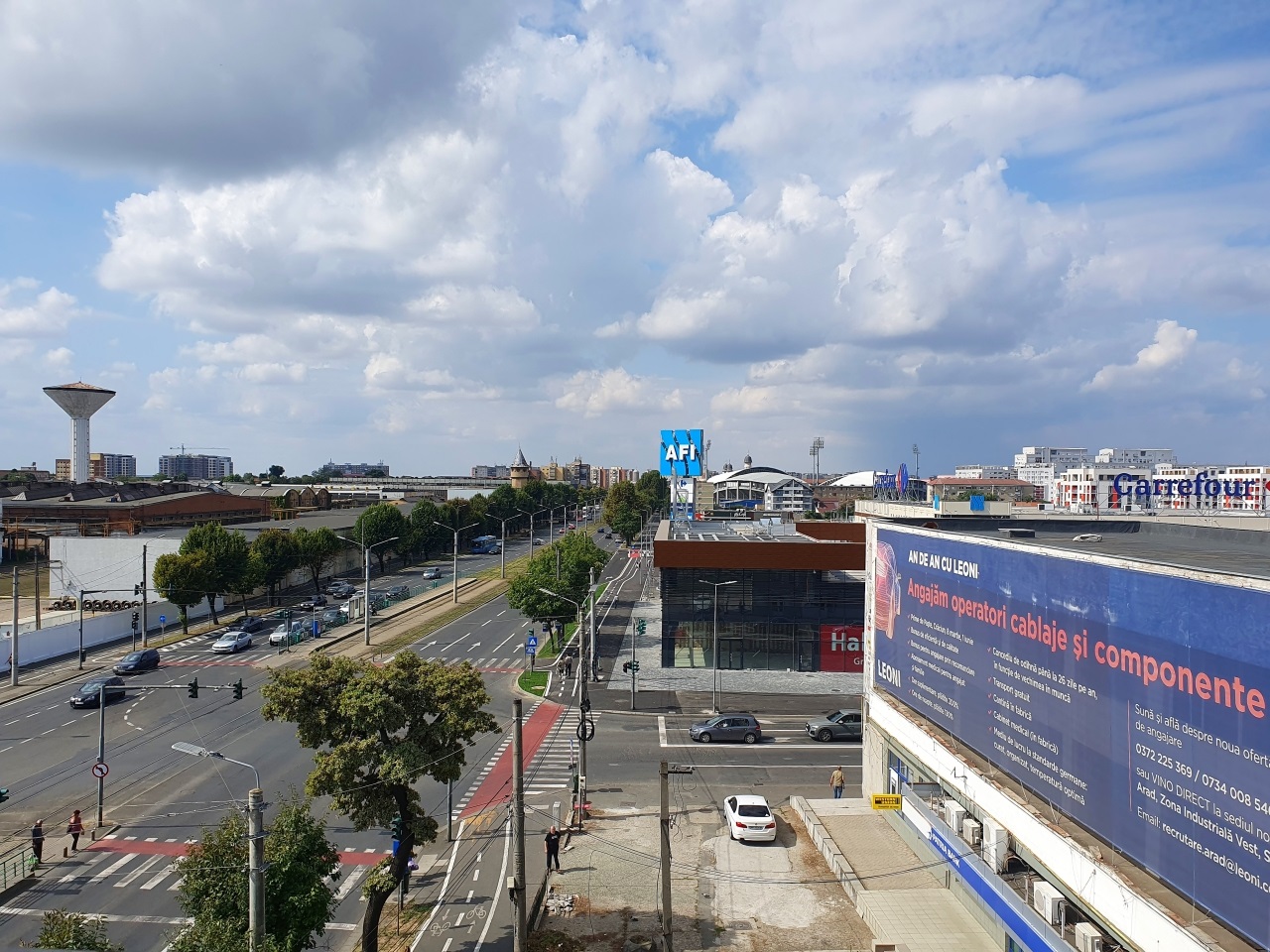
Here is the view from the roof of the mall, with Carrefour to the right. In “foggy” regions or countries it’s only the French who do business; the Germans or English do not come so deep in East Europe.

Here is a sculpture in front of the Sabin Drăgoi Art College. I find this sculpture really archetypal for the Romanian people: head missing (so no eyes to see, no brain to think, no mouth to make themselves heard), put in a coffin, the hands in a passive resigned stance. The sculpture touched me deeply…
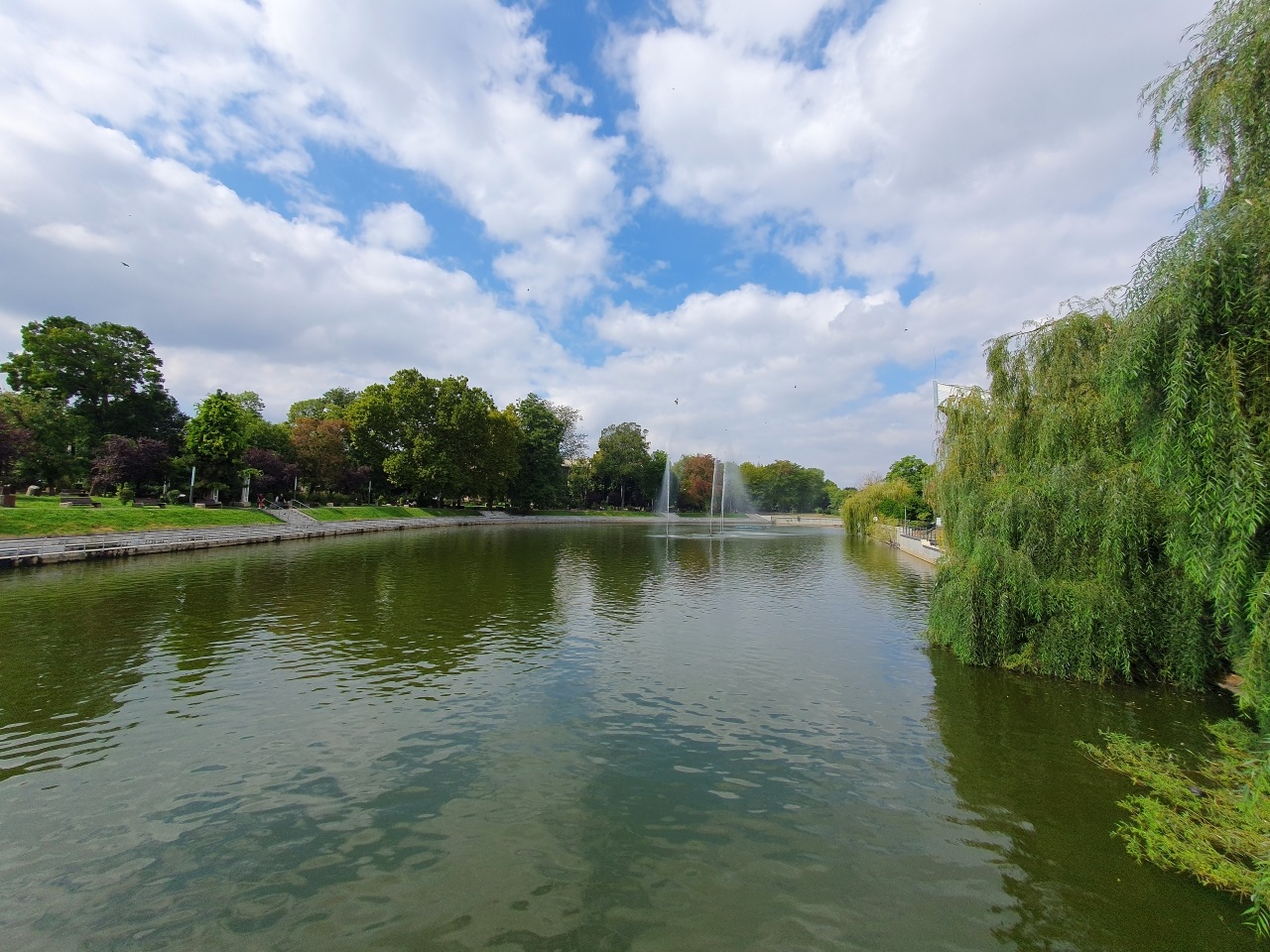
Even if it’s in the Western Plain and on the banks of the Mureș River, Arad has green parks. Here is Pădurice Park (the spinney or small forest park) and its Artesian Fountain which, surprisingly, worked.
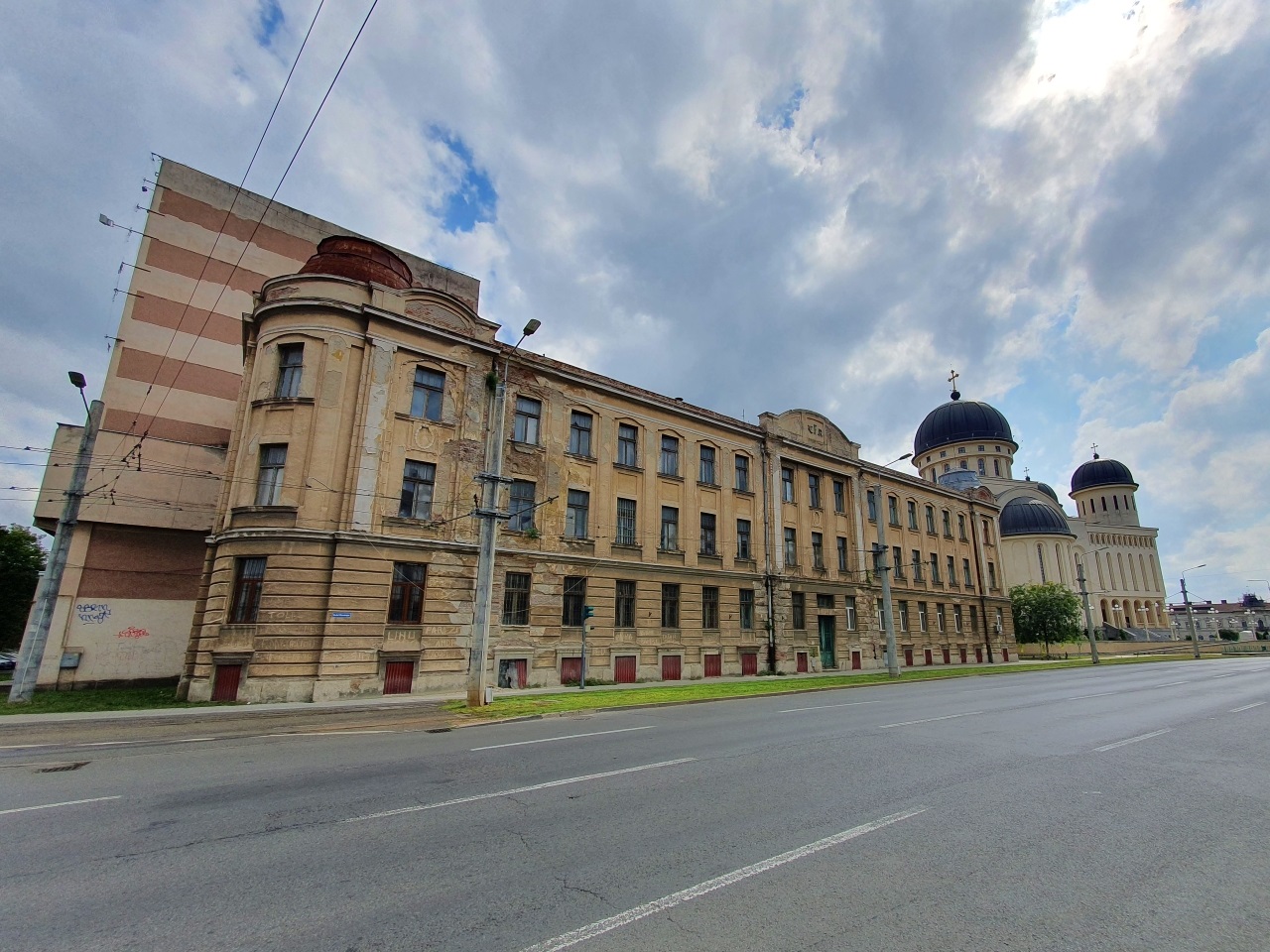
Opposite the park there are 2 buildings: the Railway Palace and the Holy Trinity Orthodox Cathedral.
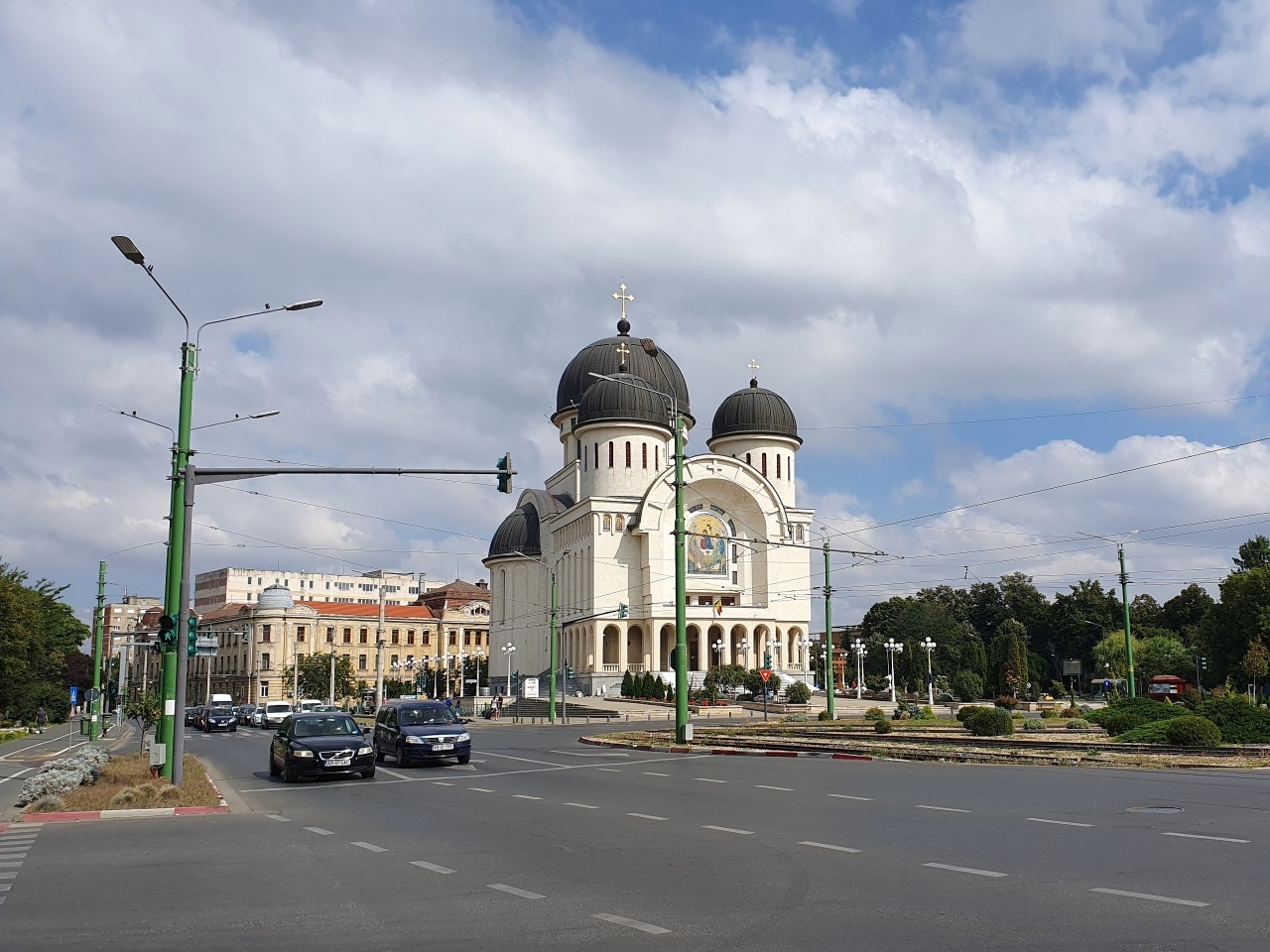
The Orthodox Cathedral is the seat of the archbishop of Arad and was built between 1992 and 2008 (yep, that’s a long time). The bells are from Innsbruck, Austria. The cathedral is nicely painted inside, following the tradition of Eastern Christianity.
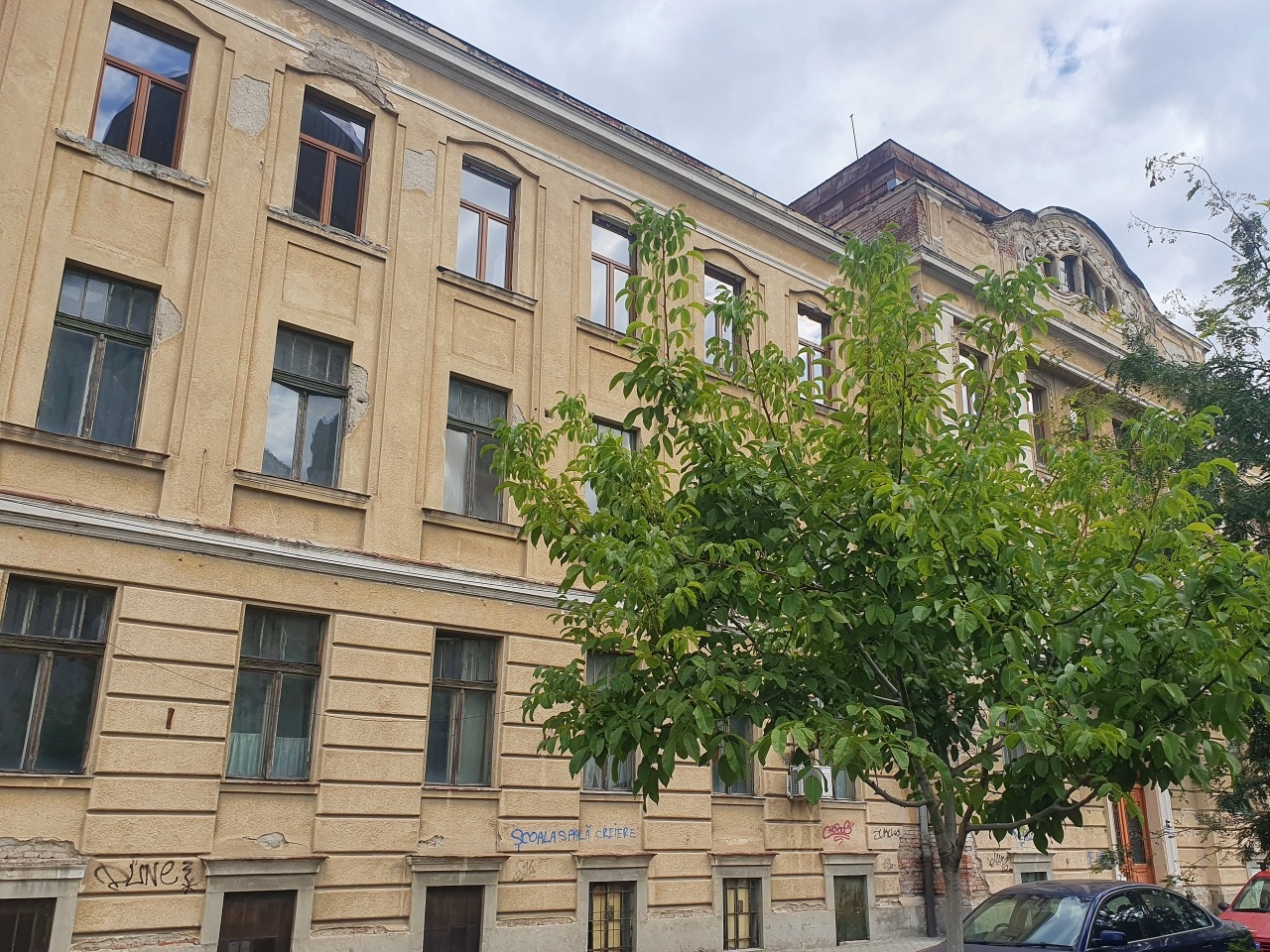
Now, the building behind the church, as I said, is the Railway Society Palace. But in the same building now functions a tech high school. The entire building complex is actually the former Lloyd Palace, built in 1909, used for council meetings, balls and a meeting place for the economic elite of Arad. Now it’s in ruin and you can notice some graffiti on it. But let’s have a closer look!
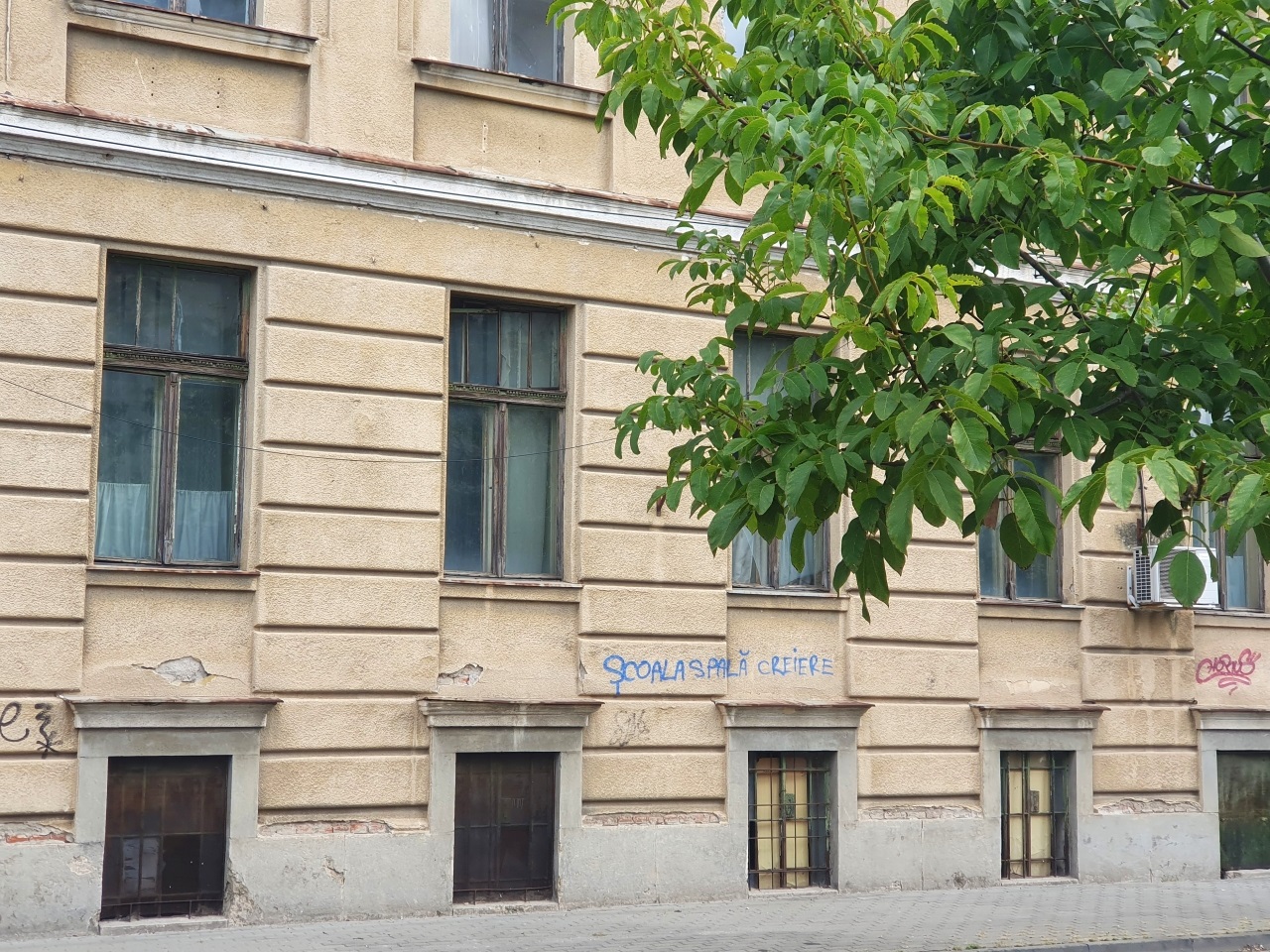
On the wall it writes in Romanian: “Scoala spala creiere“. This translates to: “School is brainwashing” or “School is washing the brains”. I always thought that it’s actually the opposite: school is enlightening people and makes them more civilized. We could enter a debate here, as it’s true that some schools (and in some historical times) can instill ideologies, but I guess that the advantages of education outweighs the disadvantages of indoctrination, as the main function of school is to teach you how to think for yourself. Apparently the graffiti disagrees. It’s true that the communism was spread through schools and more recently, the “woke” madness has also begun in universities. But I think it’s wrong overall. Have a look at the state of ruin of the building, in a country that has been left by the “brains”, only to be inhabited by the “clean heads” or “untamed, pristine heads”. Do you like it?
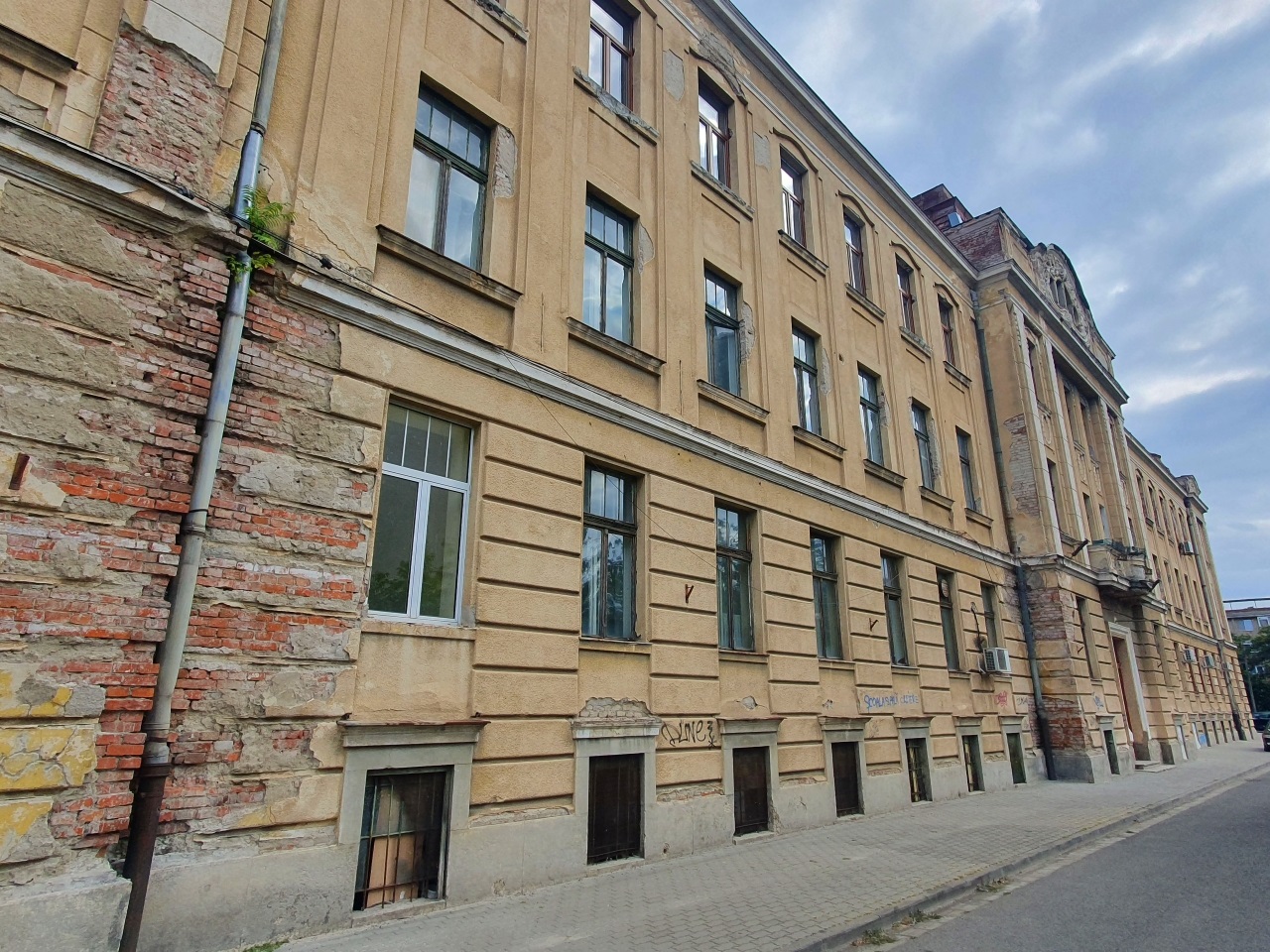
A people refusing to be brainwashed is a people having this kind of buildings… It is truly about brainwashing or about indolence? Judge for yourself!
Arad – North
